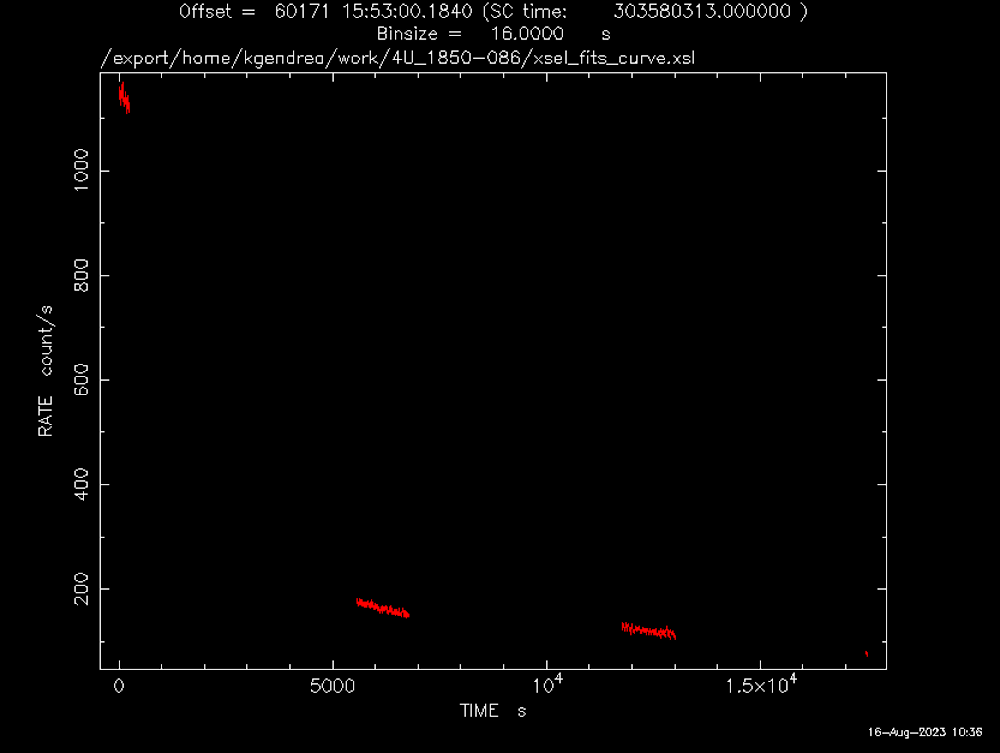NICER / ISS Science Nugget
for August 17, 2023
OHMAN Snags a Rare Superburst
NICER and JAXA's MAXI -- two ISS payloads striving to be ever more responsive to the dynamic X-ray sky -- join forces through the On-orbit High-energy Monitor Alert Network (OHMAN), a software payload that runs on a laptop within the Japanese Experimental Module. As the ISS orbit sweeps broad swaths of sky through MAXI's field of view, OHMAN searches the MAXI data stream in real time for unexpected flashes of X-ray brightness, localizes any interesting target, determines whether and when the target may be within reach of NICER's pointing system, and relays the relevant times and coordinates to NICER. This fully automated system offers the potential for triggering NICER observations of transients within minutes, far exceeding the swiftness of a typical ground-commanded response.
On Tuesday, Aug 15, at 15:42:29 UT, MAXI detected enhanced X-ray emission from a direction consistent with the known binary system 4U 1850-087, a neutron star with a low-mass stellar companion likely in a short-period (less than an hour) orbit. Not much more is known about 4U 1850, but observations with past X-ray missions have detected thermonuclear ("Type I") X-ray bursts from the system. The vast majority of such bursts last tens of seconds long and represent explosive fusion reactions involving a mix of hydrogen and helium nuclei on the neutron star's surface. A few longer-duration (100s of seconds) events have also been seen, thought to arise from burning of helium in deeper layers. The longest-lasting (1000s of seconds) and most energetic class -- called superbursts -- results from the thermonuclear fusion of carbon; superbursts occur at a rate of about once per year, across all known accreting neutron star systems. No superburst from 4U 1850 had previously been recorded.
MAXI's detection of sudden brightening on Aug 15 was transmitted to NICER via OHMAN, and NICER was able to point to the target at 15:51:51 UT, 9 minutes and 22 seconds after the start of the burst. The initial NICER observation lasted approximately 5 minutes, during which the rate of X-ray counts from 4U 1850 was found to be more than 1,100 per second and already trending downward. Additional observations were commanded by the NICER team for two more orbits (25 min exposure each) and a final one lasting 5 minutes. Despite a steep decline, 4U 1850's brightness remained well above its quiescent level of approximately 70 counts per second. The length of the decaying tail indicates that MAXI-OHMAN-NICER detected the first known superburst from 4U 1850. Very early analysis of the resulting spectroscopic data reveals the evolving temperature and size of the cooling blast cloud, and hints at one or more spectral features -- which provide insight into the elemental makeup of the explosion debris -- in the earliest triggered observation, which would not have been possible without OHMAN's automated response capability.

NICER's observations of a superburst from the neutron-star binary system 4U 1850-087. Exponential decay of the source brightness is evident in measurements made over four successive ISS orbits, the first of which was triggered by the MAXI payload through OHMAN.
<< Previous
Main Index
Next >>